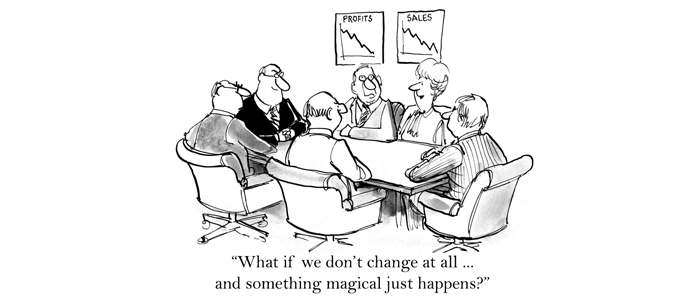“I’m sorry to say so
but, sadly it’s true
that Bang-ups
and Hang-ups
can happen to you”
Dr Seuss – Oh the Places You’ll Go
You can’t escape change. The march of time and gravity is relentless.
What’s changed over the last five years in your work-place? Bosses change, colleagues move on, there are new faces in the team. Maybe you found a new job yourself.
Now think about your personal life over the last 5 years. You got married, you had a child, you moved house, a parent died.
We have a love-hate relationship with change because it gives us mixed results. It’s neither all good nor all bad but contains the seeds of both.
It is however often uncomfortable. Try this simple exercise. Fold your arms across your chest. Now try and fold them the opposite way. Difficult isn’t it?
Change can be gradual and subtle or it can be immediate and shocking. One thing is certain though, without change, life on this planet ceases to exist.
Managing business change means acknowledging that impermanence is an integral part of your work environment.
But successful leaders don’t let life roll over them. When the unforeseen happens, they quickly pick themselves up, look at the hand they’ve been dealt and get on with winning. How can you do this?
* Respond logically
The quicker you pass through the natural stage of righteous-indignation, innocent-victim, the sooner you move into the “what’s to be done and how do we do it” planning stages.
* Feel less out of control
For some people, the loss of control can be more devastating than the actual change itself. The more rapidly you develop a well thought out strategy for approaching a problem the less overwhelmed you’ll feel.
* Focus on what you can control
Don’t waste valuable time trying to have an impact on those things that you genuinely can’t control. Save your energy for where you can influence.
* Avoid getting derailed by anger
Anger eats away at your health and your ability to think rationally – even if you have valid reasons for feeling enraged.
* Reduce employees’ resistance
You won’t be much help to your employees if you’re thrashing around confused and frustrated. They won’t expect you to have all the answers, but they do look to you for a clear direction, a logical strategy and a calm unemotional focus. The quicker you regain control of yourself and the situation, the more confident your employees will feel in your leadership and the more willing they will be to follow you.
With thanks to Craig Gipple and Beth Evard.
